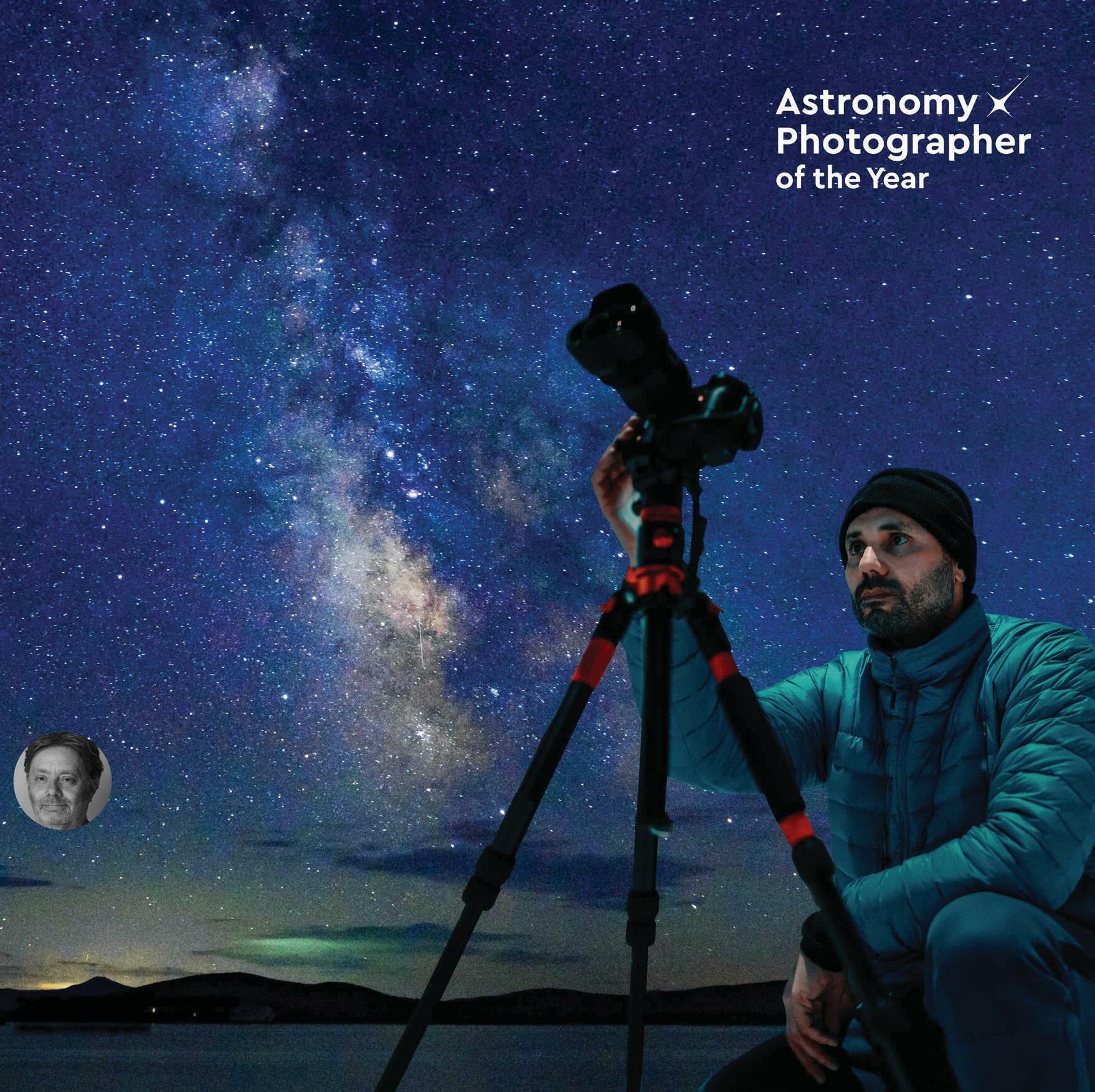
The cameras that are built in our smartphones are incredible pieces of technology. Today, many people use their smartphone cameras to capture images of the night sky using 'Night' or 'Low Light' settings, or even dedicated apps. These are great for photos of bright things, such as lunar haloes, planetary conjunctions, and bright comets, but eventually, anyone wanting to take astrophotos of constellations, nebulae, and other celestial delights will have to consider a better option. They need to bite the bullet and buy what many people still consider 'a proper camera' - a DSLR, or Digital Single Lens Reflex camera.
The only problem is, then they have to use it...
This feature is going to take you by the hand and lead you gently through the minefield of taking and processing your very first astrophotos. After that, you can start experimenting with settings and composition to make your photos even better.
There's no better time to make a start, as the Astronomy Photographer of the Year Awards 2023 has just opened for entries. The awards have a special prize for newcomers who have only recently started taking astrophotos - perhaps one of yours could be the one to take home the prize.
But first, let's get started with your first photo!
Setting up your equipment
Getting the right kit is key to getting a good first photo
What will you need to take your first astrophoto with a DSLR? Obviously, the most essential thing is a DSLR, and we're going to assume you already have one of those! The make is irrelevant, they all do the same job, which is to collect light on a sensor chip that is turned into an image. You'll also need a memory card in your camera. This sounds obvious but trust me, you don't want to be standing in the middle of a field in the dark and see the words No Memory Card In Camera’ appear on your screen because you left it at home
This story is from the {{IssueName}} edition of {{MagazineName}}.
Start your 7-day Magzter GOLD free trial to access thousands of curated premium stories, and 9,000+ magazines and newspapers.
Already a subscriber ? Sign In
This story is from the {{IssueName}} edition of {{MagazineName}}.
Start your 7-day Magzter GOLD free trial to access thousands of curated premium stories, and 9,000+ magazines and newspapers.
Already a subscriber? Sign In

Could We Find Aliens by Looking for Their Solar Panels?- Designed to reflect ultraviolet and infrared, the panels have a unique fingerprint
Researchers searching for life beyond Earth spend a lot of time thinking about what telltale signs might be detectable astronomically. Forms of unambiguous evidence for the presence of life on another world are known as biosignatures. By extension, techno signatures are indicators of activity by intelligent, civilisation-building life.

Antimatter- In our continuing series, Govert Schilling looks at antimatter, the strange counterpart to most of the matter filling our Universe
Particles and corresponding antiparticles are very much alike, except they have opposite electrical charges. For instance, the antiparticle of the electron - known as the positron - has the same tiny mass, but while electrons carry a negative electrical charge, positrons are positively charged.

Where Have All The Milky Way's Early Stars Gone?- Our Galaxy has a curious lack of pristine stars
The Big Bang produced a Universe filled almost exclusively with hydrogen and helium; all other elements - what astronomers call metals - were produced by stars, supernovae and everything that happens later. So if you can pick out a pristine star with no metals polluting it from among the billions in the Milky Way, then you are likely to have a star dating from our Galaxy's earliest days.

Inside The Sky At Night - Two years ago, exoplanet scientist Hannah Wakeford received some of the first data from the JWST
Two years ago, exoplanet scientist Hannah Wakeford received some of the first data from the JWST. In July's Sky at Night, we discovered what she's learned since then.

How to stack DSLR data in Siril
Easily combine multiple frames to boost detailin your astro photos

Lunar occultation of Saturn
You'll need to strike a balance on 21 August to capture the Moon covering the ringed planet

How to plot a variable star light curve
A rewarding project to chart stars that change brightness

Smartphone photography with a telescope
Mary Mcintyre explains how to get impressive night-sky images using your phone

Once-a-century solar storm is overdue
If a Carrington Event struck today it would be catastrophic, says Minna Palmroth

The new era of human spaceflight
There's been a step-change in crewed space missions since the dawn of the 21st century. Ben Evans charts its course and looks ahead to future horizons